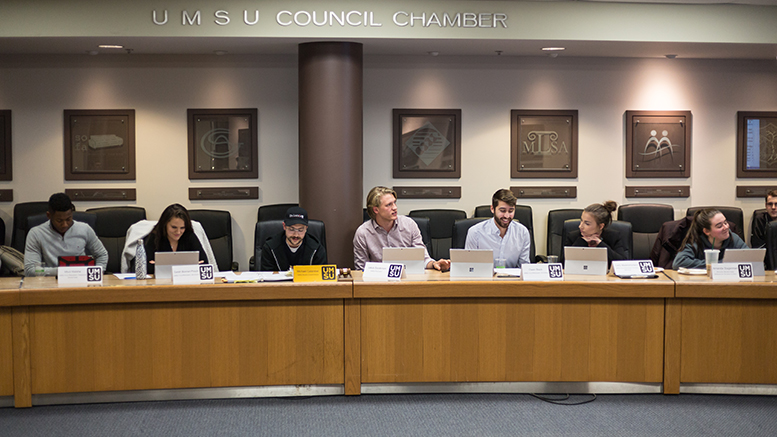The UMSU board of directors passed a motion to change various responsibilities and titles of the board’s executive positions at its Jan. 24 campus meeting.
The motion, which was presented at the U of M’s Bannatyne campus, passed unanimously.
According to the motion, the amendment to the UMSU governance and operations manual is meant to create “larger categories of responsibilities that executives have the capacity to oversee in the manner they see fit, whether this means the hiring of, and delegation to, staff members for certain projects or a more hands-on approach.”
Two executive positions will also have their titles changed in order to fit their new responsibilities.
The vice-president of student services (VPSS) position will become the vice-president of student life position. Supporting documentation to the motion refers to the role’s new responsibilities as “focused around providing students with the opportunities and supports to succeed in their day-to-day student life.”
The vice-president external (VPE) position will become the vice-president community engagement as the role will be “focused around providing opportunities for engagement with both the campus and broader communities.”
The motion’s supporting documentation runs through the goals of the ideal UMSU executive portfolio delegations, and states that the current executive portfolio does not achieve those goals.
According to the document, the roles of the UMSU president, the vice-president of advocacy (VPA) and the VPSS have larger workloads than the vice-president of finance and operations (VPFO) and the VPE, resulting in the VPFO and VPE focusing on “creating their own priorities” while other executives are busier with assigned responsibilities.
The document contains an analysis of current executive responsibilities and a proposal to redistribute them, stating the current model results in “contradictory responsibilities, as well as an overly structured formulation of executive duties, that leaves little room for delegation and little room for innovation.”
The motion, which was moved by the UMSU governance committee, also says “UMSU would likely benefit from giving thought to the major purposes of the union, what the authorities are under each, what skillset is required for each, and how the portfolios can better reflect that.”
The document suggests that in comparison to other student unions, UMSU is lacking in three primary areas: funding self-sufficiency due to their over-reliance on student fees, the union’s limited role in social programming and external advocacy leadership.
UMSU’s work toward autonomy from student fees has been well-documented over the past year.
The union announced it had been working toward a feasibility study examining the possibility of building a new, UMSU-owned student union building at its 2018 fall annual general meeting, a goal which UMSU president Jakob Sanderson said would make the union “less reliant on student fees.”
The changes to the organization’s governance and operations manual will come into effect May 1.




